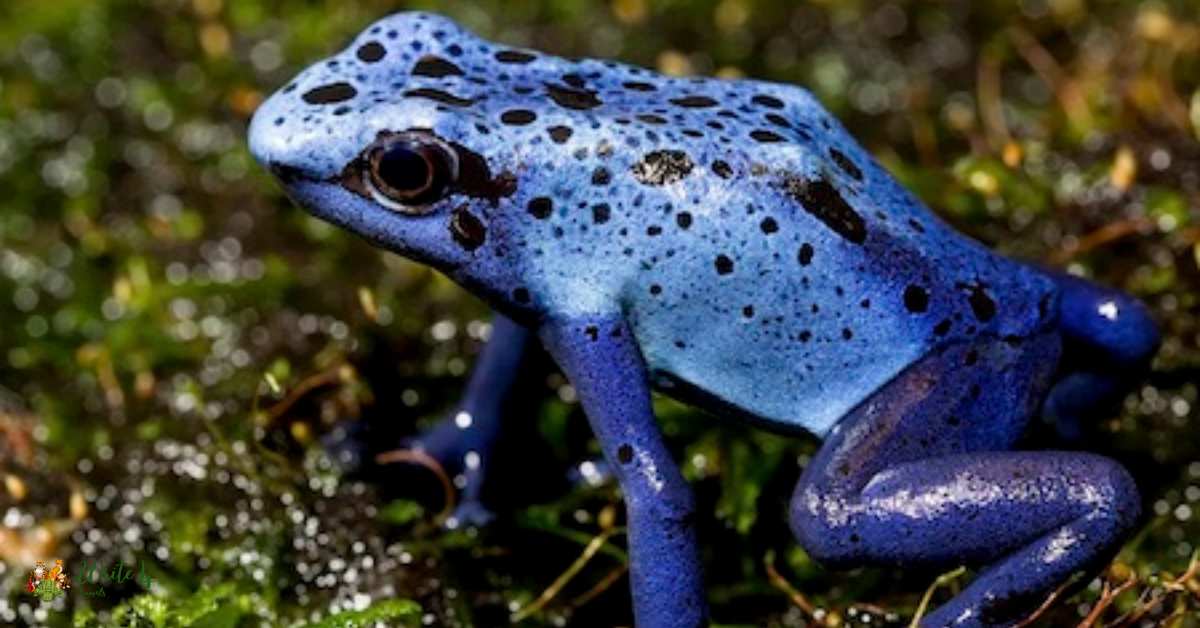Nature’s palette is a masterpiece, with colors that paint the canvas of the world in hues that captivate and inspire. While the animal kingdom showcases a vast array of colors, one of the most mesmerizing and enigmatic shades is blue.
From the depths of the oceans to the skies above, the world is home to an astonishing variety of blue animals that continue to intrigue and amaze us. In this exploration, we embark on a journey to discover 15 of the most captivating blue animals in the world.
15 blue animals in the world
1. Blue Morpho Butterfly
The Blue Morpho Butterfly, native to the rainforests of Central and South America, is a living masterpiece with its stunning azure wings. These ethereal creatures captivate observers as they gracefully flutter through the lush green canopies.
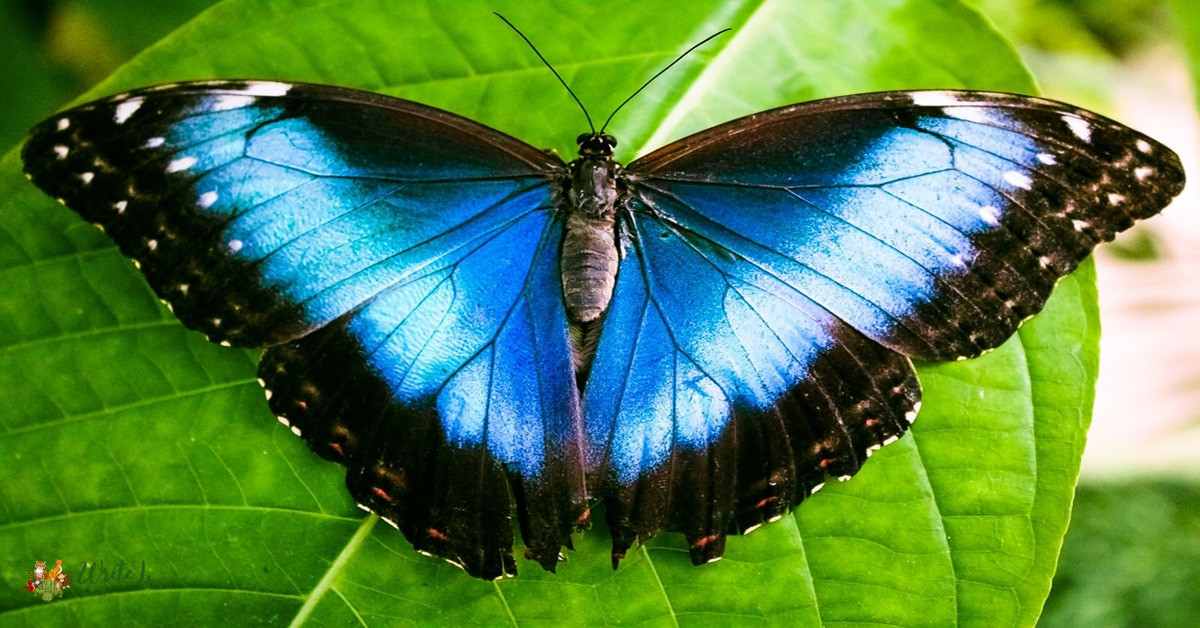
Their wings, adorned with iridescent scales, create a mesmerizing display that seems to shift in color as sunlight dances upon them. This visual spectacle serves multiple purposes, from attracting mates to confounding potential predators.
Despite their delicate appearance, Blue Morpho Butterflies are resilient, navigating the dense rainforest with agility. Their role in pollination underscores their ecological importance, contributing to the vibrant biodiversity of their habitat.
2. Blue Tang Fish
In the vast expanse of the Indo-Pacific’s coral reefs, the Blue Tang Fish commands attention with its royal blue body and striking black markings. Known for its prominent presence in animated films, this species adds a touch of magic to underwater ecosystems.
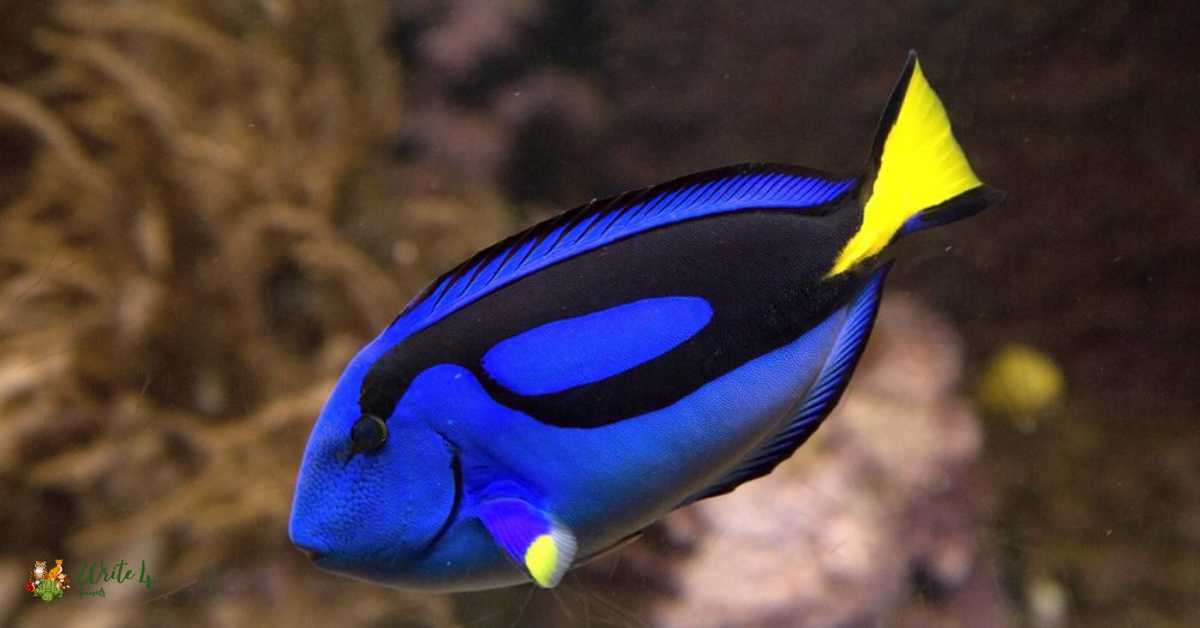
The vibrant blue coloration is not merely aesthetic; it serves as a form of camouflage, allowing the Blue Tang to navigate the intricate reef structures while eluding potential predators.
Beyond their visual allure, these fish play a crucial role in reef health, contributing to the delicate balance of marine ecosystems. The Blue Tang Fish, with its distinctive appearance and ecological significance, stands as a testament to the wonders of the underwater world.
3. Blue Poison Dart Frog
Within the dense rainforests of Suriname and Brazil, the Blue Poison Dart Frog reigns as a tiny yet vivid marvel and comes in the list of blue animals. Its azure hue serves as a striking warning to potential predators, advertising the potent toxins within its skin.
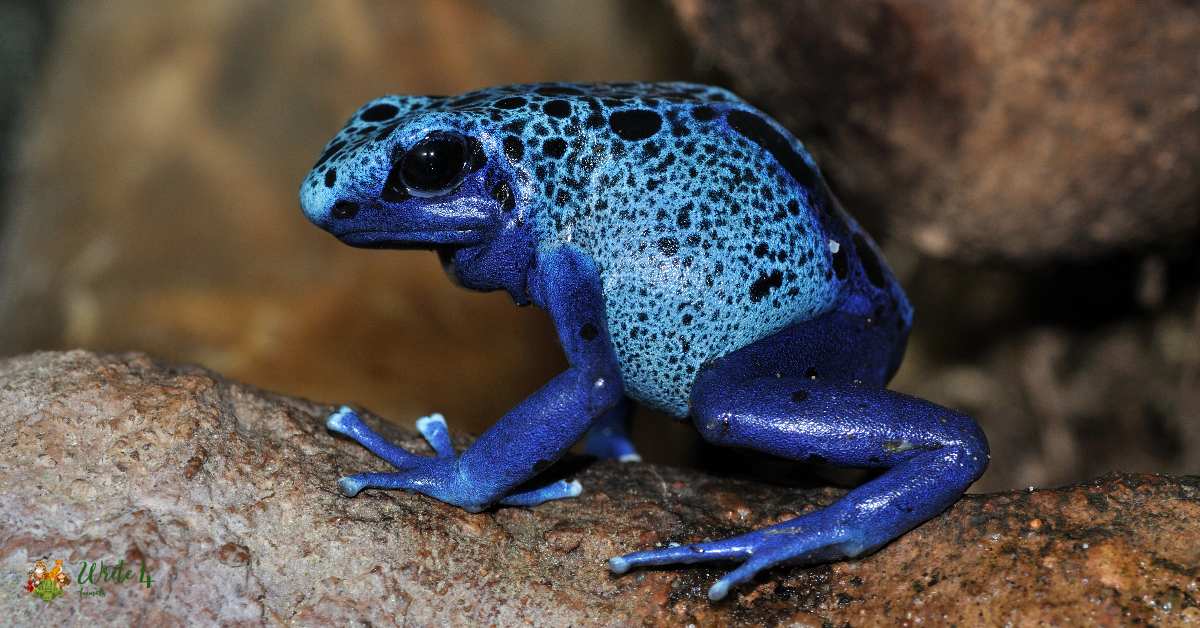
Despite their diminutive size, these frogs play a crucial role in their ecosystem. Their vibrant colors and toxic nature deter predators, ensuring their survival and allowing them to thrive in their lush habitat. Studying the Blue Poison Dart Frog provides valuable insights into the delicate balance of nature, where small creatures wield powerful defenses.
As ambassadors of biodiversity, these frogs underscore the importance of preserving their rainforest homes, which harbor countless wonders yet to be discovered.
4. Blue Jay
Native to North America, the Blue Jay is a charismatic avian resident with its distinctive blue feathers and striking black crested head. These intelligent and vocal birds are a common sight in backyards, where their vibrant plumage adds a touch of elegance to the natural landscape.
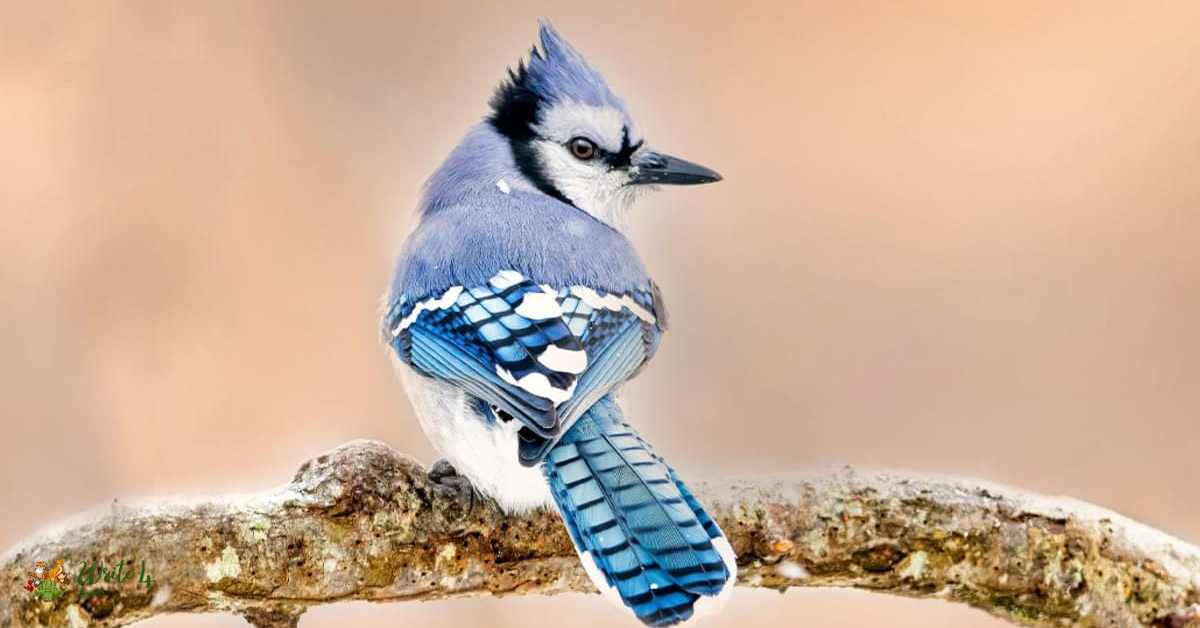
Blue Jays are renowned for their varied calls and mimicry abilities, contributing to their social complexity and communicative prowess within their groups.
Their omnivorous diet and adaptability make them resilient inhabitants of diverse environments, from woodlands to urban areas. Observing the Blue Jay in its natural habitat offers a glimpse into the intricate behaviors and interactions that define these enchanting birds.
5. Blue Iguana
Exclusive to the Grand Cayman Island, the Blue Iguana stands as a symbol of rarity and conservation. This reptile, with its captivating blue skin, is one of the rarest iguana species globally, facing significant threats to its survival.
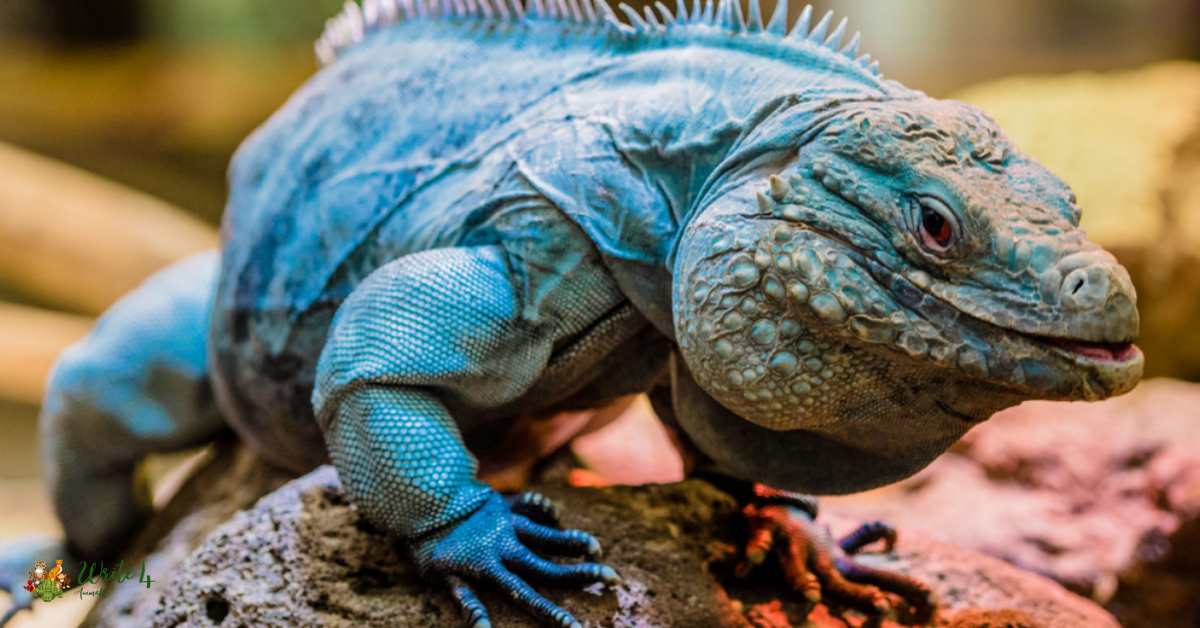
The distinctive blue coloration is attributed to the presence of pigments in its scales, creating a visual spectacle unique to this species. Conservation efforts, including breeding programs and habitat restoration, are crucial to the survival of the Blue Iguana.
As an integral part of the island’s ecosystem, these iguanas play a role in seed dispersal and vegetation control. Preserving their habitat not only ensures the survival of a species but also contributes to the overall health of the island’s delicate ecosystems.
6. Blue Glaucus
Drifting along the ocean’s surface, the Blue Glaucus, a species of sea slug, defies expectations with its otherworldly appearance. This marine marvel, found in open seas worldwide, captivates with its upside-down floating posture and mesmerizing blue coloration.
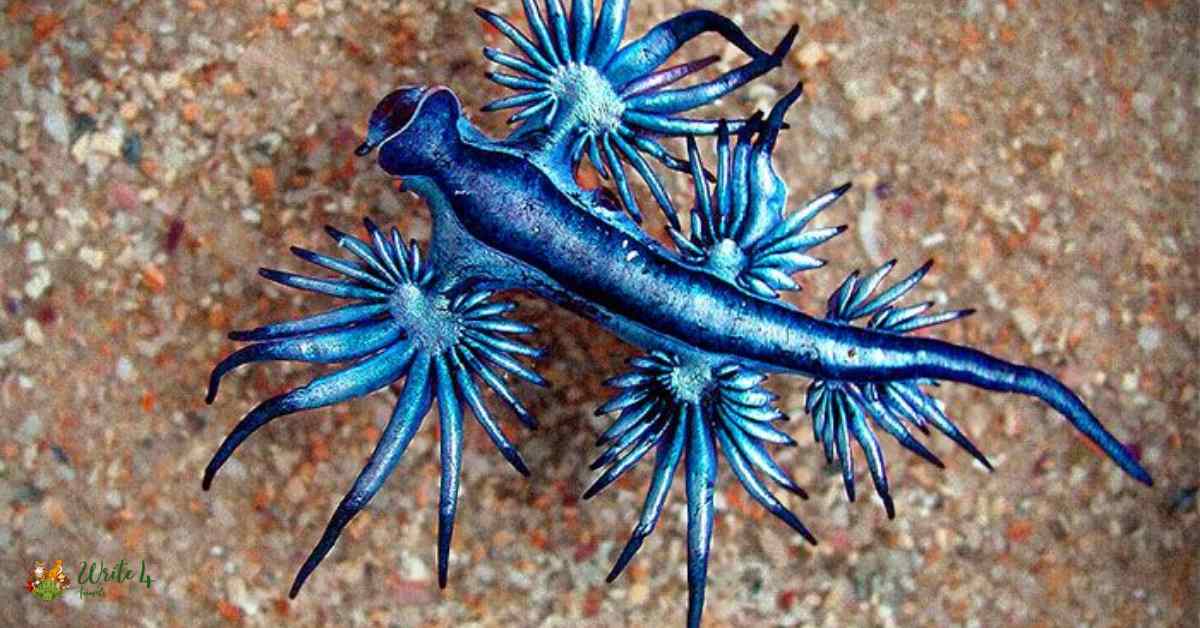
The unique hue acts as camouflage against the vast blue backdrop of the ocean, protecting the Blue Glaucus from potential predators. Despite its delicate appearance, this sea slug is armed with stinging cells acquired from its prey, granting it a potent defense mechanism.
Observing the Blue Glaucus highlights the adaptability and resilience of marine life, showcasing the intricate strategies these creatures employ to survive in the ever-changing expanse of the open ocean.
7. Blue Emperor Dragonfly
Taking flight across European and Asian landscapes, the Blue Emperor Dragonfly enchants observers with its captivating azure body and transparent wings. These agile insects, with their striking appearance, are a common sight near freshwater habitats during the warmer months.
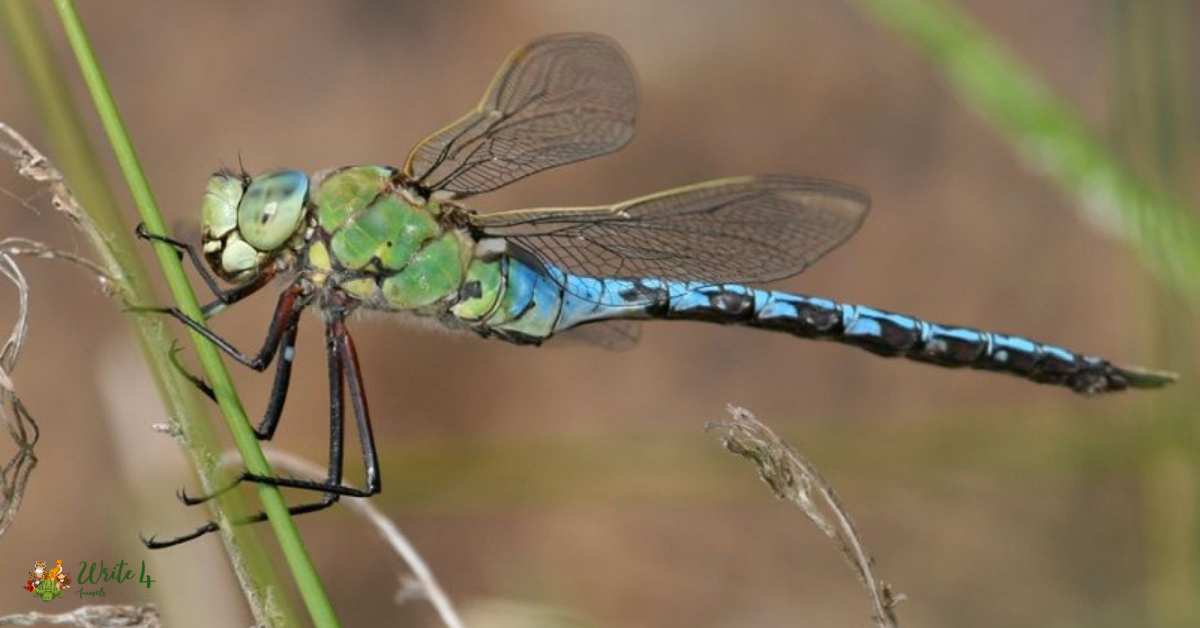
The Blue Emperor Dragonfly’s aerial prowess and keen hunting skills make it a formidable predator of smaller insects. Its life cycle, from aquatic nymph to airborne adult, is a testament to the intricacies of the natural world.
Studying these dragonflies offers valuable insights into the health of freshwater ecosystems, as they are sensitive to changes in water quality. The Blue Emperor Dragonfly, with its vibrant presence, symbolizes the delicate balance of nature in aquatic environments.
8. Blue-and-yellow Macaw
In the lush rainforests of South America, the Blue-and-yellow Macaw reigns as a vibrant ambassador of avian beauty. With its dazzling blue plumage, vibrant yellow accents, and touches of green, this parrot species stands out as one of the most visually stunning in the world.
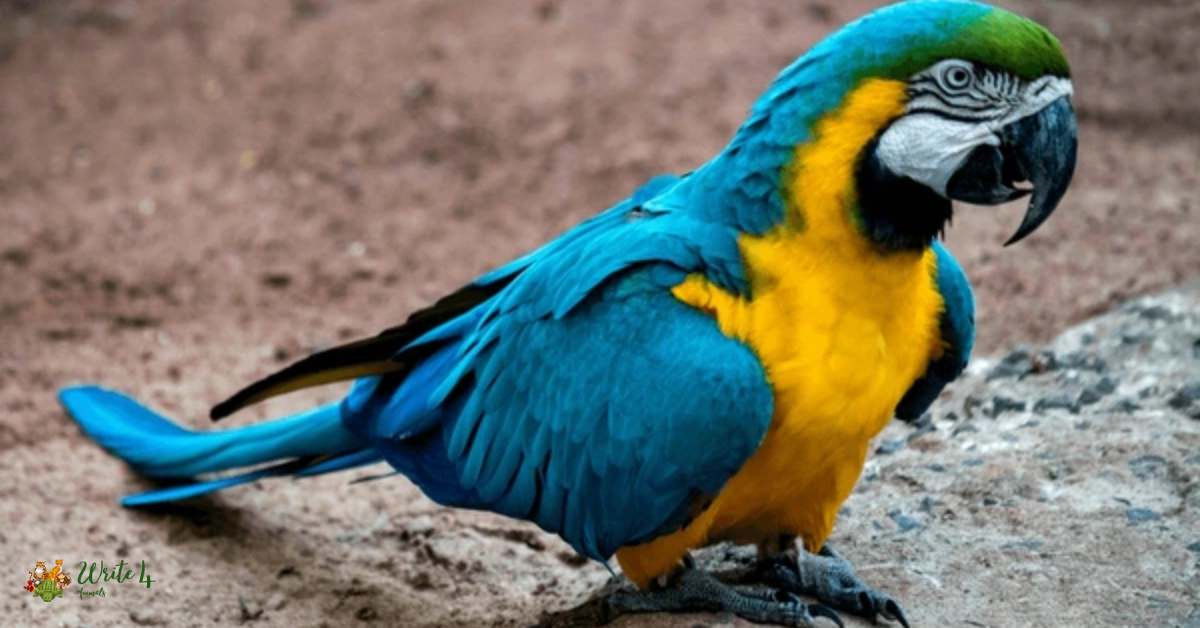
Its raucous calls and social behaviors contribute to the lively atmosphere of the rainforest. The Blue-and-yellow Macaw’s adaptability and intelligence make it a successful inhabitant of various forested habitats, from pristine rainforests to disturbed areas.
Unfortunately, habitat loss and illegal pet trade pose significant threats to their populations. Conservation efforts are crucial to ensuring the survival of these majestic birds, preserving the biodiversity and ecological balance of their tropical homes.
9. Peacock
Replacing the Blue-footed Booby in our exploration is the resplendent Peacock, an iconic bird celebrated for its extravagant display of iridescent blue-green plumage. Native to South Asia, the Peacock is a symbol of beauty and elegance, often featured in mythology and cultural symbolism.

The distinctive “eye” patterns on its tail feathers, called “train,” serve as a dazzling visual spectacle during courtship displays. While the male Peacock is renowned for its vibrant colors, the female, or peahen, exhibits a more subdued yet elegant appearance.
Beyond their aesthetic appeal, Peafowls contribute to pest control in agricultural landscapes and play a role in cultural traditions. Admiring the Peacock showcases the intersection of natural beauty and cultural significance in the diverse tapestry of the animal kingdom.
10. Bluehead Wrasse
Darting through the vibrant coral reefs of the Caribbean, the Bluehead Wrasse adds a splash of color to the underwater world. This small yet vibrant fish showcases a distinctive blue head, setting it apart from other reef inhabitants and comes in the list of blue animals.
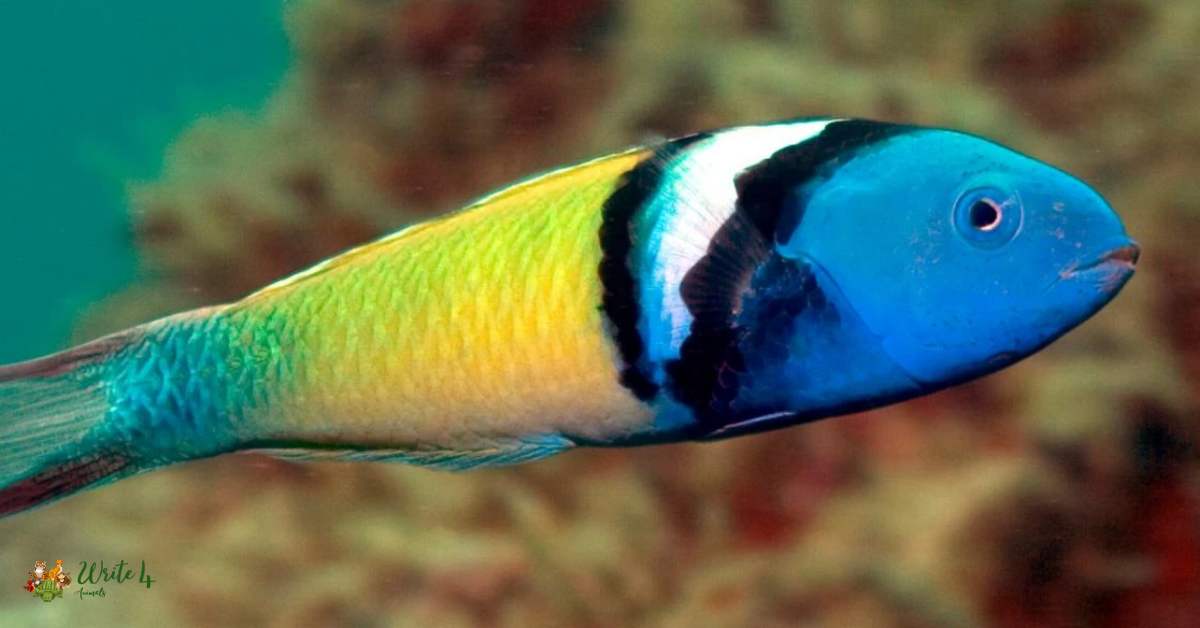
The striking colors of the Bluehead Wrasse are not merely for aesthetics; they play a crucial role in signaling reproductive status within the social structure of the group. As a protandrous hermaphrodite, this species undergoes a gender change from male to female, contributing to the dynamic nature of coral reef ecosystems .
The Bluehead Wrasse’s diet, consisting of small invertebrates and parasites, contributes to the overall health of the coral reef ecosystem by helping control potential threats. Observing these colorful fish in their natural habitat provides a glimpse into the intricate social dynamics and interconnectedness of marine life within coral reefs.
As guardians of the underwater realm, Bluehead Wrasse exemplify the delicate balance required for the preservation of these vital ecosystems.
11. Blue-ringed Angelfish
Navigating the warm waters of the Indo-Pacific, the Blue-ringed Angelfish emerges as a stunning underwater gem. With its electric blue and yellow coloration, this species captivates divers and underwater enthusiasts alike.
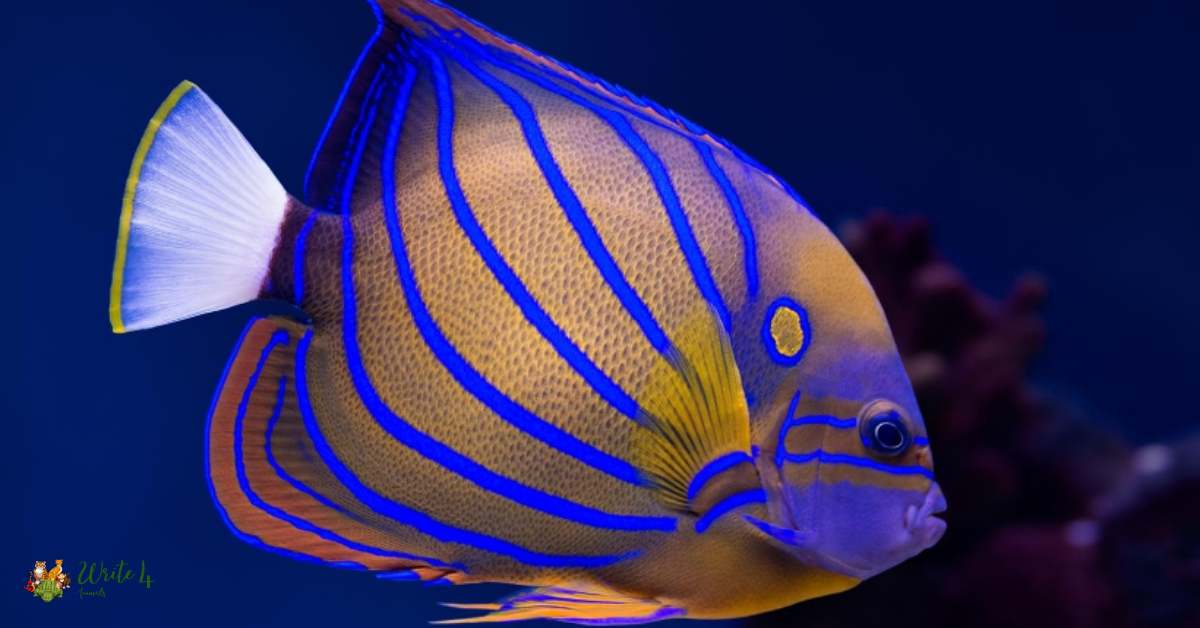
Found among coral formations, the Blue-ringed Angelfish contributes to the vibrant biodiversity of reef ecosystems. Its adaptability allows it to thrive in various reef environments, from shallow coral gardens to deeper, more intricate formations.
Despite their mesmerizing appearance, these angelfish face threats from over-exploitation for the aquarium trade and habitat degradation. Conservation efforts are crucial to safeguard the delicate balance of coral reefs and ensure the continued existence of these breathtaking marine inhabitants.
12. Blue Ribbon Eel
Unveiling the mysteries of the ocean’s depths, the Blue Ribbon Eel emerges as an extraordinary marine species. With its elongated body and mesmerizing electric blue hue, this eel is a sight to behold in the Indo-Pacific region.
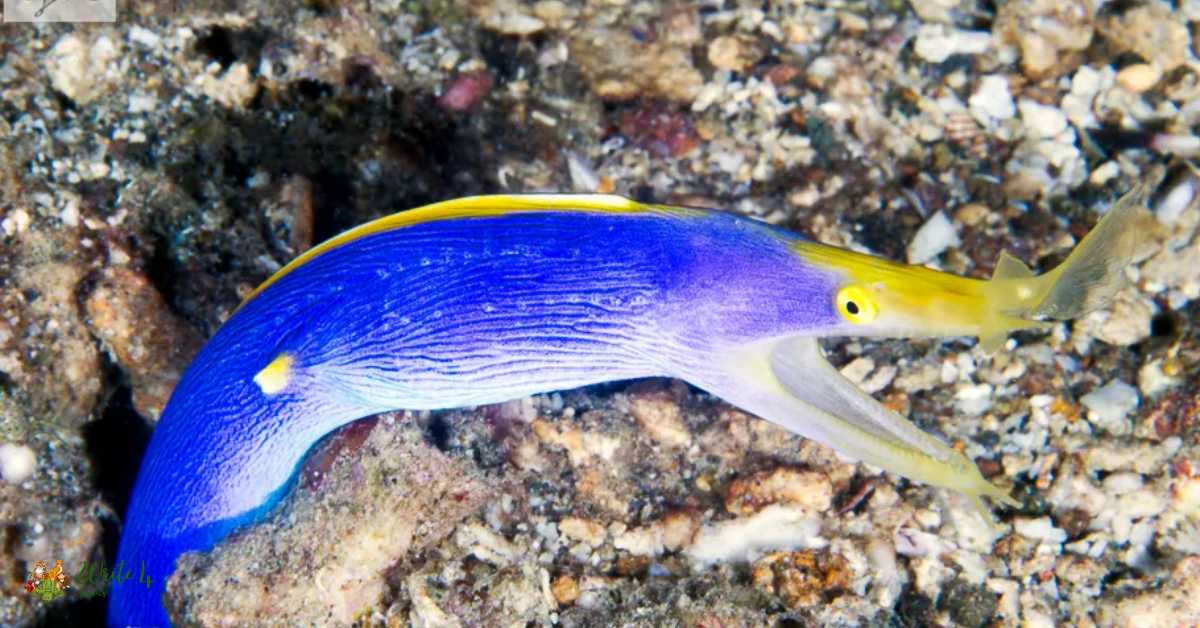
The ribbon-like tail further accentuates its unique and captivating appearance. Despite its striking beauty, the Blue Ribbon Eel faces challenges in the form of over-exploitation for the aquarium trade and habitat degradation.
Its presence in coral reefs is not only visually captivating but also contributes to the ecological balance by controlling the population of small crustaceans and fish. The conservation of these enigmatic creatures is vital to preserving the health and diversity of coral reef ecosystems.
13. Blue Sea Star
Delving into the depths of the ocean, the Blue Sea Star emerges as a celestial presence among coral reefs. With its elegant blue coloration and multiple arms, this marine creature gracefully navigates the complex underwater landscapes and makes this fish in the list blue animals.
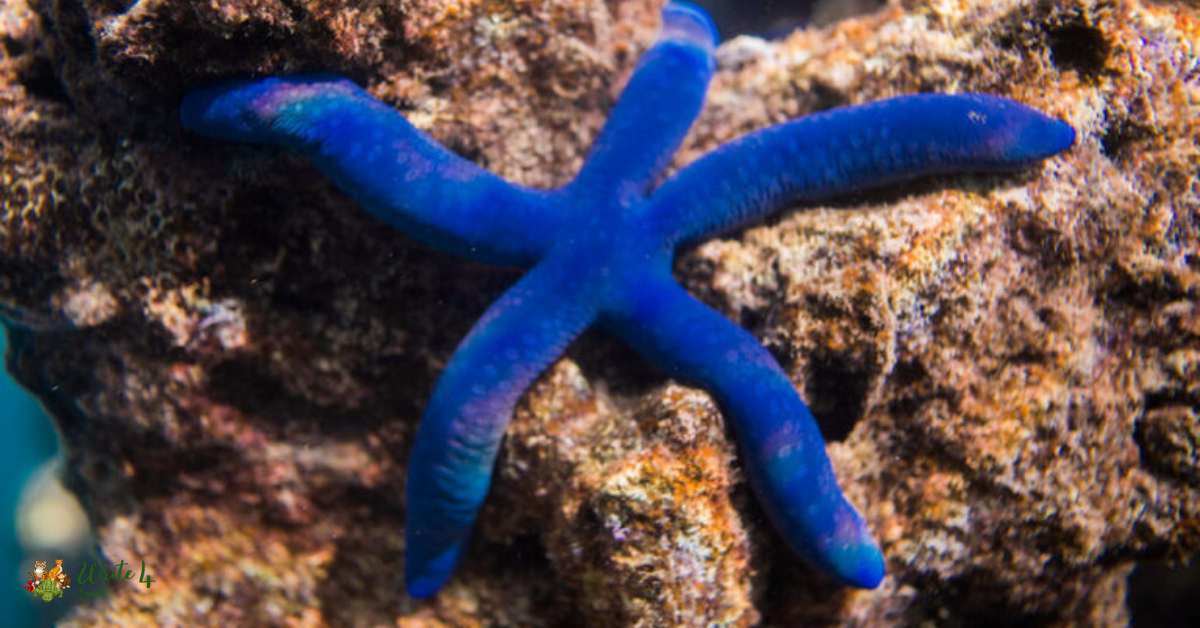
Blue Sea Stars play a crucial role in reef ecosystems by aiding in the decomposition of organic matter and maintaining a balance in the populations of other marine organisms.
Their regenerative abilities, allowing them to regenerate lost arms, contribute to their resilience in the face of environmental challenges. As guardians of the ocean floor, Blue Sea Stars symbolize the intricate relationships within marine ecosystems and the importance of preserving the delicate balance of life beneath the waves.
14. Blue ringed Octopus
Despite its diminutive size, the Blue-ringed Octopus commands attention as one of the ocean’s most venomous creatures. Found in the Indo-Pacific waters, this cephalopod stands out with its vivid blue rings, serving as a warning of its potent venom.
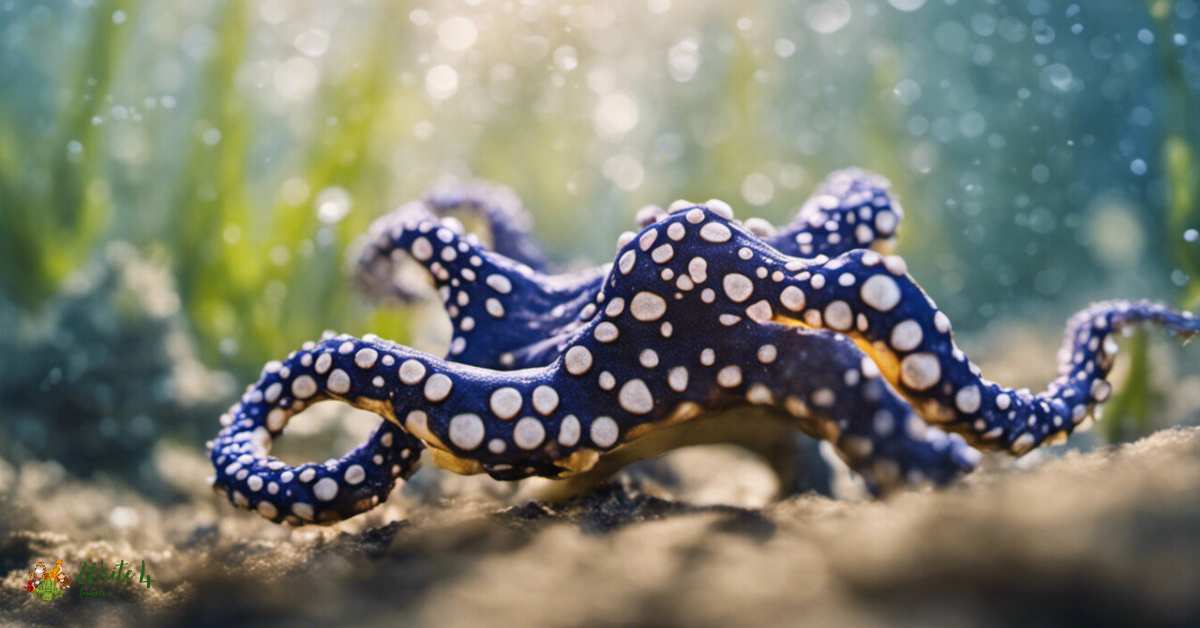
The Blue-ringed Octopus employs a combination of camouflage and warning coloration to navigate its surroundings and deter potential threats. Their diet primarily consists of small crustaceans and fish, showcasing their role in maintaining ecological balance within marine ecosystems.
The enigmatic nature of the Blue-ringed Octopus serves as a reminder of the mysteries that dwell beneath the ocean’s surface and the need for responsible marine conservation to safeguard these remarkable but delicate creatures.
15. Blue Willy Wagtail
Concluding our exploration closer to home, the Blue Willy Wagtail graces the landscapes of Australia with its charming presence. Despite its small size, the striking contrast of its black and blue plumage makes it a delightful bird to observe in the wild.
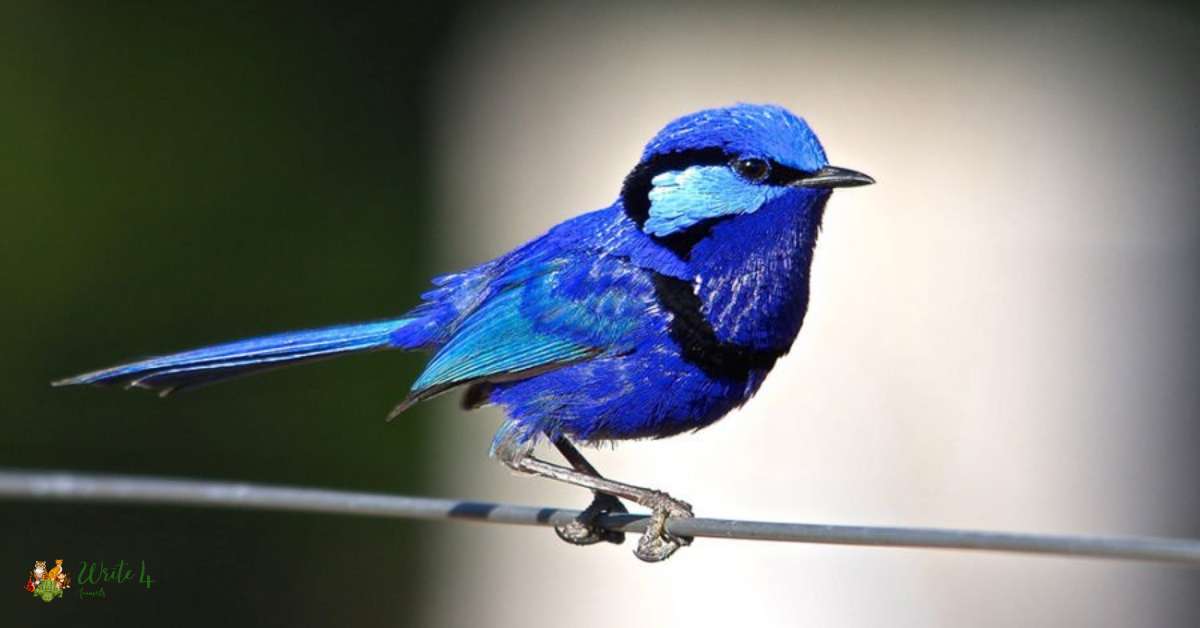
The Blue Willy Wagtail is known for its energetic and acrobatic foraging behavior, capturing insects on the wing with remarkable agility. Its adaptability to various habitats, from urban areas to rural landscapes, showcases the resilience of this avian species.
As a member of the flycatcher family, the Blue Willy Wagtail contributes to pest control by preying on insects, further highlighting its ecological significance. Observing these charismatic birds connects us to the rich biodiversity found in our own backyard and underscores the importance of preserving natural habitats for the benefit of both wildlife and humans.
Frequently Asked Questions
What causes the blue coloration in animals?
Blue coloration in animals is primarily due to the presence of pigments or structural features in their tissues. Pigments like melanin can produce blue hues, while structural elements such as microscopic scales, feathers, or skin can scatter light to create the appearance of blue. In some cases, a combination of pigments and structural features contributes to the vibrant blue colors seen in various species.
Are there truly blue animals, or is it an optical illusion?
There are indeed animals that exhibit true blue coloration, whether through pigments or structural elements. The Blue Morpho Butterfly, for example, displays true blue coloration due to microscopic scales on its wings. However, in some cases, the perception of blue may be influenced by how light interacts with the animal’s tissues, creating optical illusions.
How does the blue color benefit or disadvantage animals in their habitats?
The benefits and disadvantages of blue coloration vary among species. Blue can serve as camouflage in open water or dense vegetation. It can also be a means of attracting mates, communicating within a species, or warning predators of toxicity. On the other hand, animals with blue coloration may be more visible to predators in certain environments.
Why do some animals change color, including turning blue?
Animals can change color for various reasons, such as camouflage, communication, or thermoregulation. In some cases, like the Blue Glaucus sea slug, color change is a form of camouflage. Chameleons, on the other hand, change color for communication and thermoregulation, adapting to their surroundings or signaling their emotional state.
How do blue animals adapt to their environments?
Blue animals often adapt to their environments through a combination of coloration and behavior. For instance, the Blue Tang Fish’s vibrant blue coloration helps it blend with coral reefs, while its behavior allows it to navigate intricate reef structures. Adaptations may also include feeding habits, reproductive strategies, and specific physical characteristics.
Are there any blue animals that are endangered or threatened?
Yes, several blue animals are currently endangered or threatened due to habitat loss, pollution, climate change, and human activities. The Blue Iguana, for example, is critically endangered due to habitat destruction and invasive species. Conservation efforts are crucial to protect these species and their habitats.
How do blue animals communicate within their species?
Blue animals often use their coloration as a form of communication within their species. This can include courtship displays, signaling reproductive readiness, establishing dominance, or warning of potential danger. The Blue-and-yellow Macaw, known for its vibrant plumage, uses visual and vocal cues to communicate with other macaws.
Are there any cultural or symbolic meanings associated with blue animals?
In various cultures, blue animals can carry symbolic meanings. For example, the Peacock, with its vibrant blue-green plumage, is often associated with beauty, grace, and immortality in several Eastern cultures. Blue animals may also be featured in myths, folklore, and religious symbolism, reflecting the diverse ways humans perceive and interpret the natural world.
Can blue animals be kept as pets?
While some blue animals, like certain fish and birds, are kept as pets, it’s crucial to consider the ethical implications, legal regulations, and the specific care requirements of each species. Many blue animals have specialized needs, and responsible ownership involves providing proper care, a suitable environment, and considering the conservation status of the species.
Recommended
1. Albino Monkey: History, Facts and More | albino monkeys
2. 15 black animals in the world | black animal names
